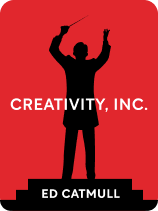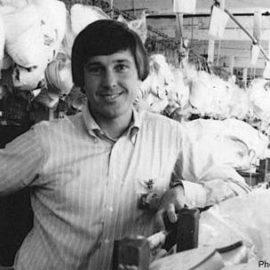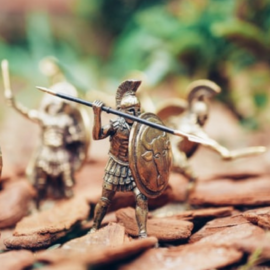

This article is an excerpt from the Shortform book guide to "Creativity, Inc." by Ed Catmull. Shortform has the world's best summaries and analyses of books you should be reading.
Like this article? Sign up for a free trial here .
Are you looking for a Disney Pixar case study? How was Ed Catmull able to apply his management strategies from Pixar to Disney Animation Studios?
After being an independent company for 20 years, Pixar was sold to Disney. This Disney Pixar case study explores how the Pixar management strategies helped revive the flailing Disney Animation Studios.
Keep reading for a Disney Pixar case study.
Disney Pixar Case Study: Background
In 2005, Jobs told Catmull and Lasseter that he was considering selling Pixar to Disney. This shocked the Pixar leaders because, at the time, Pixar and Disney had hit a rough patch. However, leadership at Disney had recently changed, and the new CEO, Bob Iger, wanted to bring Pixar back into the fold. Disney Animation had been struggling for years, and Iger believed that Catmull and Lasseter could reinvigorate the organization by leading both Pixar and Disney Animation. Iger assured them that Pixar would maintain its autonomy and its company culture.
Ultimately, Jobs gave the decision to Catmull and Lasseter. During negotiations, Catmull drafted a lengthy list of demands that ensured Pixar’s culture wouldn’t be impacted after being bought by a massive entertainment studio such as Disney. These demands ranged from keeping a “no assigned parking” rule to ensuring that Pixar leadership could still distribute bonuses following box office success. In addition to these demands, Catmull insisted that Pixar remain separate from Disney Animation Studios with each company working on their own projects. Once these safeguards were established, Catmull and Lasseter agreed to sell Pixar to Disney.
Reviving Disney Animation Studios
Prior to the Disney/Pixar merger, Disney Animation had been struggling to create new and innovative works. Following the Disney Renaissance of the 1990s, the studio had failed to produce a critically and commercially successful film. Where they had once produced classics such as The Lion King or Beauty and the Beast, their recent output had been critical duds such as Chicken Little and Brother Bear. While these films had some merits, they were nowhere nearly as universally beloved as their predecessors.
The Problems in the Disney Pixar Case Study
Once the merger went through, Catmull immediately began his tenure as the president of both Disney Animation Studios and Pixar. When he arrived at Disney, he saw a number of alarming problems that stifled the studio’s ability to create innovative films:
- A lack of personality. On his first tour of the building, Catmull noticed the sterile environment of the office space. Desks were empty and the walls were barren. The lack of creativity in the space reflected the lack of creativity in Disney’s recent animated films.
- Ineffective floorplans. Disney Animation’s studios were spread out over four floors with teams being floors away from one another. This made it difficult for teams to quickly communicate and removed any impetus to check in on colleagues. Also, the offices for studio leaders were far away from everyone else and had an elitist design with multiple secretary desks and doors. This “executive suite” made it challenging and intimidating for any employee to approach an executive or high-level manager.
- Fear of candidness. Previous leadership at Disney Animation didn’t allow for failure or open feedback. If someone’s idea failed or they openly disagreed with a manager or leader, their job would be on the line. This created constant fear that stifled creative impulses and caused the production of uninspired work.
- No collaborative feedback system. Before Catmull arrived at Disney, teams were given feedback in the form of checklists from three different sources: the studio’s development department, the studio head, and Disney’s former CEO, Michael Eisner. These notes were mandatory and left no room for collaboration. They were also often conflicting, which left creative teams in a tricky situation when trying to implement the feedback. While the teams had developed an unofficial internal feedback system called Story Trusts, the process lacked the structure and management to be effective.
- Unwillingness to change. Though many were open and excited about the new leadership, some high-ranking members of Disney’s studio weren’t thrilled about the new direction. They believed that their system was working, and that they were on the verge of a breakthrough when Iger pulled the plug.
The Solutions in the Disney Pixar Case Study
While Catmull insisted that he didn’t want Disney to become a clone of Pixar, he recognized that the core values of the company were universal. With this in mind, Catmull immediately started making changes:
- He championed individuality. Artists need the room and freedom to express themselves. It helps them feel comfortable in their environment and be more original in their work. At Pixar, employees would make elaborate designs and environments in their cubicles and offices. Catmull brought this same creative freedom to Disney.
- He redesigned the workplace. Catmull promoted interactivity and collaboration by moving departments so certain teams could be closer together, and he created communal environments where teams could relax and talk with other colleagues. He also moved his and Lasseter’s offices to the middle of the main floor to show that anyone could talk to them at any time.
- He promoted candidness. Catmull insisted that employees could be candid without the fear of retaliation. This was challenging because many of the Disney employees had been told for years that their opinions held no value and expressing them could actually hurt them. Catmull held multiple meetings with creatives and explained the importance of candidness. While it took some time, the Disney team eventually embraced this concept.
- He helped develop Story Trusts. Catmull invited various Disney employees to fly out to Pixar’s studios and observe a Braintrust meeting. Using this information, the Disney team worked with Catmull to develop Story Trusts into a similar feedback mechanism. While Story Trusts did have their own unique elements, the core purpose of delivering candid feedback in a structured setting helped boost the quality of Disney’s future films.
- He removed those unwilling to change. While most employees were retained after the merger, those who refused to make changes were let go. Catmull found the people who he believed were ready and willing to make the necessary adjustments to move the studio forward.
After implementing changes within Disney, the studio’s work began to improve. In fact, one of the first films under Catmull, Bolt, received an Oscar nomination. This sudden surge of success proved that the Catmull’s concepts could be effectively applied to another creative organization to boost their efficiency and creativity. The Disney Pixar case study shows that Catmull’s principles and results could be replicated.
Shortform Section: Critical Trends in Disney Animation Studios’ Films
Beyond the Disney Pixar case study, there’s important context to know about how Disney Animation Studios was performing. For reference, from 2000-2005, Disney Animation Studios’ theatrical releases had an average score of less than 70% on Rotten Tomatoes. Comparatively, between 2007-2019 (after Catmull had taken over and changed the culture at the studio), almost none of their films dropped below an 85% on Rotten Tomatoes (with the exceptions of Frozen II and Meet the Robinsons). The changes at Disney allowed for creative collaboration and open feedback. As a result, the critical reception of their films started to improve.
(For more information on how Rotten Tomatoes determines their scores, click here.)

———End of Preview———
Like what you just read? Read the rest of the world's best book summary and analysis of Ed Catmull's "Creativity, Inc." at Shortform .
Here's what you'll find in our full Creativity, Inc. summary :
- How Pixar went from selling computers to successful animation studio
- What it takes to build a creative workplace culture
- Why George Lucas sold Pixar to Steve Jobs






